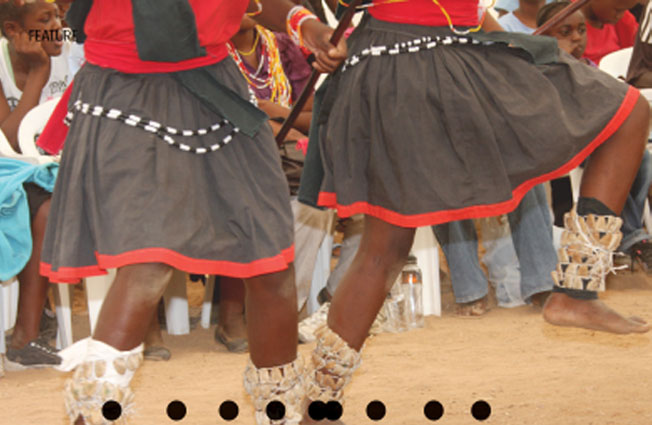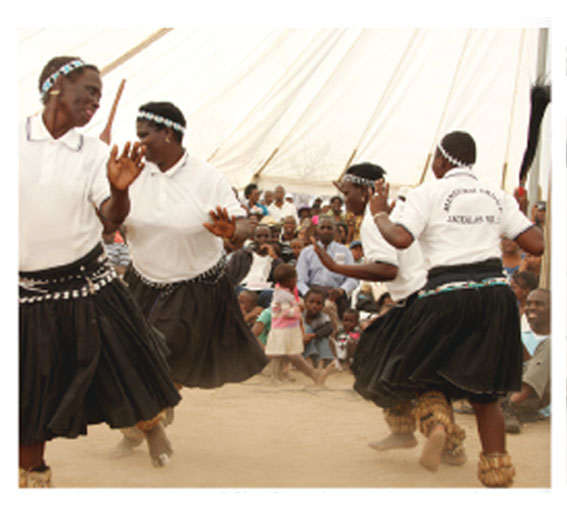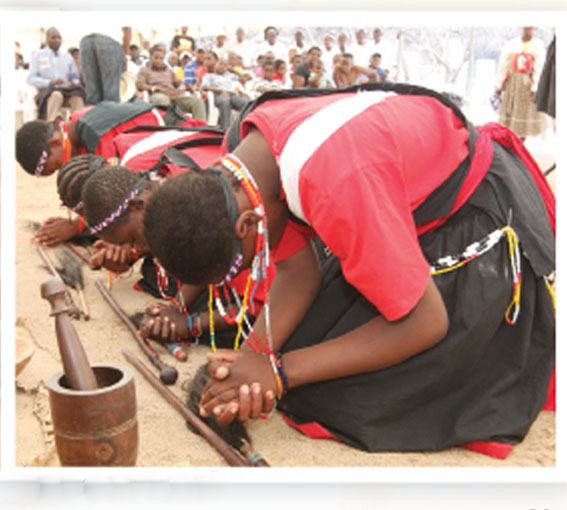More Than Just A Dance
Source : Kutlwano
Author : Ndingililo Gaoswediwe
Location : Gaborone
Event : Interview
Most dances in Africa derive from either social, traditional, cultural or religious backgrounds, and vary across countries, communities and ethnic groups.In times of sorrow and happiness, song and dance can be soothing.
Dance in Africa can also be as nourishing as is food in that some communities can spend the whole night dancing away the hunger especially duringrain making or healing ceremonies.It can also be performed to thank ancestors for a good harvest. For an outsider it may take a while for them to decipher the meaning of a dance and movements. However, with a little explanation one discovers that African dance offers more than just entertainment. Like any other ethnic tribe in Africa, Bakalanga, a group found in the North East and some central parts of Botswana have a rich heritage of dances that they perform during social, cultural or religious events.
This rich history has been passed on orally from generation to generation. Seventy-four year-old Basetse Mamo, a famous Kalanga dancer, sheds some light on some of the Kalanga dances.
MACHUMANE
Machumane is not a popular dance and many people are not even aware there is such a dance save for
the oldies. The dance is strictly for traditional healers and is normally accompanied by the sound of three
different drums that depict the pattern of the dance moves. Traditional healers dress in red and white and drape themselves in animal skins. To add flair, dancers wear matlhowa (seed pods that are strung together
and tied around ankles). The dance that is strictly performed bare foot is common in North East. It is performed following a particular timetable.
CHIKICHA
This is a social dance normally performed during a wedding celebration. It involves women who dance to show their charming movements. Women dance in pairs and each two-some shows killer moves while others rhythmically clap= and sing.
SANGOMA
This type of dance is strictly for Sangomas and it is performed from 2pm till sunrise. Sangoma is not a common dance unless one of their own needs a physical uplift. The practitioners wear different colours at such occasions depending on preference of their ancestors but black outfits are prohibited. Completing their outfits, dancers accessorize with leather hats decorated with ostrich feathers. The dance is characterized by jumps and agility. Both the dancers and members of the audience are neither allowed to wear shoes nor apply scented deodorants or body lotions.
MAELE
This is a dance commonly performed by women only when there is no rain around the month of September. Women go to Nzeze (a tree) in Mapoka village and the dance commences at nine in the morning till lunch time. It is performed on a very hot day and women dance under the scorching sun barefoot. Pulling a
number, women clap while dancing in a circular motion.
IPERU
A Jack and Jill, Tom and Jerry dance and is common during Christmas and other celebrations. Forming two parallel queues facing each other, dancers from each line show their killer moves while going to the opposite queue to lure and pick a partner of the opposite sex.
HOSANA
Hosana is strictly for rainmaking purposes though today people dance throughout the year for “wrong” reasons such as entertainment. Under normal circumstances, Hosana should be performed between the months of January and September. Dancers strictly dress in black and white, bare foot and matlhowa are part of the attire. The dance
would not be complete without drums. Normally, dancers hold sticks while dancing and the sticks are believed to imbue them with strength. The dance is common in many places across the country, and it is popularly performed for entertainment. The dance might have spread across the country because of the moves that are pleasing
to the eye. Some of the moves include energetic jumps while some are performed with feet intact to the ground.
NDAZULA, MOKOMOTO
AND WOSO
The dances are primarily social and a chance for people to express themselves through dance and song. Ndazula,
Mokomoto and Woso are performed for celebrating different occasions such as weddings and chilling sessions such as traditional beer drinking sprees. The dances could also be perfomed to thank ancestral spirits after a good harvest.
But Woso is strictly performed by men. The dance derives the name from the Woso, an instrument that produces a chakg’a chakg’a sound if shaken. Men dance with oomph, showing electric moves while shaking the Woso. Women normally cheer them, thus dancers respond by increasing the tempo. Woso could also be performed to pave way for Hosana dancers during rain making ceremonies. When Hosana dancers dress up, Woso is used to warm the stage.
Teaser:
Song and dance has a special place in Africans’ hearts, the great Zimbabwean jazz legend, Oliver Mtukuzi, once said.















